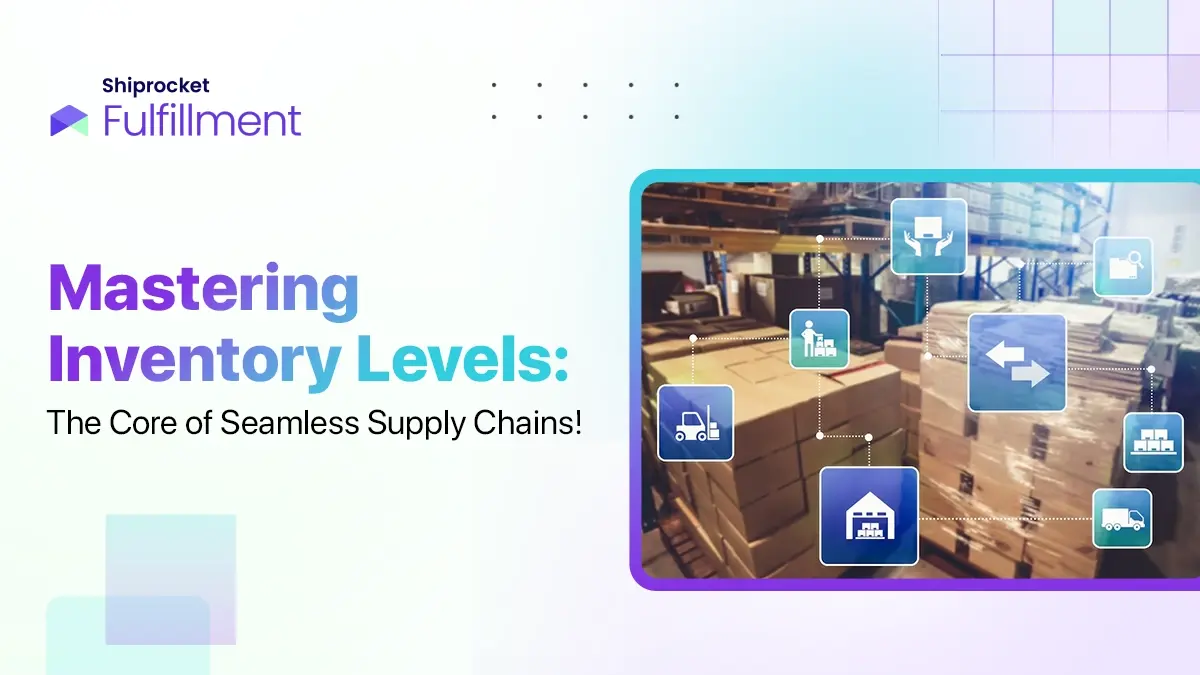Introduction
Dispatch management is crucial to ensure the seamless completion of orders for any business. It is an invisible force facilitating the movement of goods and services from your business to customers.
The intricate dispatch management process involves detailed planning, streamlined coordination, and effective communication. If done right, dispatch management can ensure greater efficiency and customer satisfaction. You can navigate the complex web of logistics and optimise your dispatch management process in several ways. You can leverage cutting-edge technology and fool-proof strategies to make the process run smoothly.

Let’s explore dispatch management in detail, break down the entire process, and discover tips for improving dispatch management.
What is Dispatch Management All About?
Dispatch management refers to your business’s process to organise, optimise, and monitor deliveries. It also refers to the process of allocating and managing service calls. Dispatch management is a multi-step process that connects your business to your customers.
Dispatch management is crucial regardless of the size of your business and your industry. Whatever products you sell, you want to ensure they reach your customer on time. Therefore, route planning and order tracking crucial aspects of dispatch management.
Some of the benefits of dispatch management are:
- It reduces the risk of delayed orders, lost or misplaced packages, and customer complaints.
- It improves operational efficiency by reducing travel time, downtime, and overtime for delivery drivers or service technicians.
- It enhances the customer experience by providing accurate and timely information on delivery status, estimated time of arrival, and service quality.
- It enables scalability and flexibility by allowing dispatchers to adjust schedules and routes based on changing demand, traffic conditions, and emergencies.
- It supports data-driven decision-making by providing insights and analytics on performance, productivity, and profitability.
Dispatch management is a vital function for any business or organisation that delivers goods or services to customers. You need excellent organisational abilities, a natural talent for managing tough situations without getting overwhelmed, and the adaptability to handle ever-changing tasks and customer requirements.
Breaking Down the Dispatch Process
Here’s a breakdown of the dispatch management process based on the provided information:
- Prioritisation and Planning: Dispatch management begins with prioritising incoming orders or service requests. This step involves evaluating factors such as delivery deadlines, order sizes, and customer preferences to determine when deliveries should be scheduled.
- Resource Allocation: After prioritisation, resources are allocated to fulfill the orders. It includes assigning delivery personnel, vehicles, and equipment to specific tasks based on factors like proximity to the delivery location, availability, and capacity of the resources.
- Real-Time Visibility: Effective dispatch management relies on real-time visibility into resources and orders. This is achieved through the use of modern technology, such as routing software like Circuit for Teams, which provides real-time tracking and monitoring of deliveries.
- Route Optimisation: Once resources are allocated, the next step is to optimise the delivery routes. This involves calculating the most efficient routes for each delivery to minimise travel time, distance, and fuel consumption. Route optimisation software takes into account factors like traffic patterns and road conditions.
- Automated Dispatch: Automation plays a significant role in streamlining the dispatch process. Dispatch procedures can be automated using software solutions, which can automatically assign tasks to available resources, generate optimised routes, and send notifications to customers about the expected delivery time.
- Communication: Effective communication is essential throughout the dispatch process. Dispatchers need to communicate route details, changes, and updates to drivers, and customers need to be informed about the status of their deliveries. Communication channels may include mobile apps, SMS alerts, or email notifications.
- Proof of Delivery: As deliveries are completed, the proof of delivery is collected. This can include electronic signatures, photos, or timestamps to confirm that the goods or services were successfully delivered to the intended recipient.
- Performance Tracking: Dispatch management involves monitoring the performance of both the dispatchers and the delivery personnel. Key performance indicators (KPIs) such as on-time delivery rates, route adherence, and customer satisfaction are tracked to identify areas for improvement.
- Continuous Improvement: Dispatch management is an ongoing process that requires continuous improvement. Dispatchers and managers analyse data from completed deliveries to identify trends, bottlenecks, and areas for optimisation. Adjustments are made to the dispatch process based on these insights.
Tips for Making Dispatch Management Work Better
Here are some comprehensive tips for making dispatch management work better:
- Effective Scheduling and Routing:
Efficient dispatch management starts with accurate scheduling and optimal route planning. Use software and tools to assign tasks based on proximity, traffic conditions, and technician availability. This reduces travel time and increases the number of tasks completed per day.
- Real-Time Communication:
Establish clear communication channels between dispatchers and field workers. Use mobile apps or communication platforms to relay real-time updates, changes, or emergencies to ensure smooth operations and quick problem-solving.
- Automation and AI Integration:
Embrace automation and AI-driven tools to streamline dispatch operations. These technologies can help in route optimisation, predictive maintenance, and automatic assignment of tasks, reducing manual errors and improving efficiency.
- Dispatch Software Selection:
Choose the right dispatch software that suits your business needs. Look for features like real-time tracking, intuitive interfaces, and integration capabilities with your other systems.
- Prioritise Customer Satisfaction:
Dispatch management directly impacts the customer experience. Ensure prompt responses, accurate ETA predictions, and clear customer communication regarding service appointments. Happy customers lead to repeat business and positive referrals.
- Continuous Training:
Train dispatchers and field workers regularly on new technologies and best practices. It ensures everyone is up-to-date with the latest tools and techniques for effective dispatch management.
- Data Analysis for Optimisation:
Collect and analyse data from dispatch operations to identify trends, bottlenecks, and areas for improvement. Data-driven insights can help make informed decisions to optimise the dispatch process.
- Collaboration and Visibility:
Foster collaboration between dispatchers, technicians, and other stakeholders. Provide visibility into the dispatch process for everyone involved to ensure alignment and efficient task execution.
- Define and Monitor KPIs:
Define key performance indicators (KPIs) such as response time, task completion rate, and customer satisfaction. Monitor these metrics and implement strategies to continuously improve them.
- Flexibility and Adaptability:
Dispatch management often involves unexpected changes. Equip your dispatchers with the flexibility to adapt to sudden changes in schedules, emergencies, and unforeseen events, ensuring efficient resource allocation.
Using Shiprocket Fulfillment for Dispatch Management
Shiprocket Fulfillment offers a comprehensive solution for efficient dispatch management in eCommerce. Their warehouse management process covers a spectrum of key steps to ensure seamless fulfillment:
- Order Processing at Our Fulfillment Center: Shiprocket Fulfillment streamlines order processing, ensuring incoming orders are swiftly handled and prepared for shipment.
- Receiving of Products: The fulfillment center receives products, verifying their quality and quantity upon arrival.
- Storage and Inventory Management: Shiprocket Fulfillment manages storage and inventory efficiently, ensuring products are organised and readily accessible.
- Order Picking: The system facilitates accurate order picking, ensuring the right products are selected for each order.
- Packaging: Products are carefully packaged to ensure they reach customers in optimal condition.
- Weight Measurement: Precise weight measurement is conducted to determine accurate shipping costs.
- Shipping & Dispatch: Shiprocket Fulfillment ensures timely and accurate shipping, dispatching orders to customers promptly.
Choosing Shiprocket Fulfillment offers various benefits:
- 1-Day and 2-Day Delivery: They provide fast delivery options to meet customer expectations.
- Reduced Shipping Cost: Shiprocket Fulfillment helps lower shipping expenses, contributing to cost savings.
- Decrease RTO: Return to Origin (RTO) rates can be reduced significantly through their services.
- No Additional Warehouse Investment: Without investing, you can benefit from their warehouse infrastructure.
- Quick and Easy Integration With Sales Channels: Integration with your sales channels is simple and efficient.
- 30-Day Free Storage: They offer a 30-day free storage period for your inventory.
Shiprocket Fulfillment addresses these needs comprehensively, ensuring that businesses can offer quality services to their customers and stay competitive in the market. Their technology-driven approach, a widespread network of fulfillment centers, and user-friendly integration contribute to streamlining the dispatch process and enhancing the overall customer experience.
Conclusion
Dispatch management can either make or break your efforts in improving customer experience and building a loyal customer base. If you implement comprehensive strategies, adapt to technological advancements, and establish a robust communication channel, you can take your dispatch management process towards greater efficiency and success.
Establishing a smooth-running dispatch management process is undoubtedly challenging. You might have to implement and test multiple strategies before you figure out one that works best for your business. Moreover, the success of your dispatch management process also depends on how well different departments coordinate within your company. You can avoid bottlenecks and maintain a seamless workflow by establishing cross-functional coordination between different departments. Dispatch management is the cornerstone for your business’s success. It can help you prevent delays, reduce costs, and improve customer experiences.
Frequently Asked Questions(FAQs)
Yes. Order fulfillment involves the complete process from receiving the order to delivering it to your customers. Dispatch management, on the other hand, only involves the timely shipment of orders.
Dispatch management offers several benefits. These include optimal resource allocation, increased efficiency, reduced response time, prevented delays, and improved customer experiences.
You might face several challenges while creating an effective dispatch management process. These challenges include handling last-minute changes, optimising the fastest delivery routes, managing workload among dispatchers, adapting to fluctuating demand, being prepared for unexpected delays, and more.
Yes. Effective communication, timely deliveries, real-time tracking, quick response times, and reduced wait times contribute to improving customer satisfaction.









